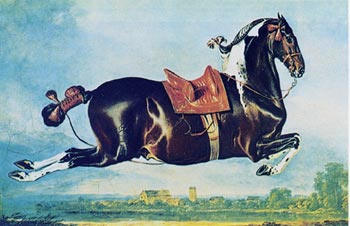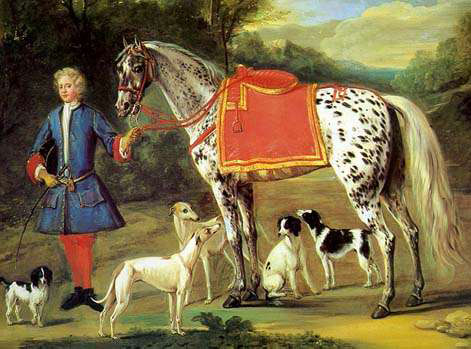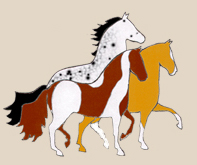 | ||||

For information on registering your Paso horse with Pintado or Atigrado characteristics
Contact us at:.
Welcome to the Official website of the Spanish Jennet Horse and
the Spanish Jennet Horse Society!
There are two registration divisions of the Spanish Jennet Horse Society


Cherished for his unique and appealing coat patterns and unequaled smooth gait, the Spanish Jennet Horse was, in the Middle Ages as he is today, a versatile, colorful horse popular because of his exceptional athletic ability and tremendous heart. In the Middle Ages the greatest horsemen of that time recognized the extraordinary value of the Spanish Jennet horse. Today he is again earning that same respect. The Spanish Jennet Horse of the Middle Ages is responsible for the comfortable gait of most modern breeds of gaited horses. The Spanish Jennet Horse possesses a gait unique in the horse world and has the genetic ability to pass that gait to his offspring.
Paso Fino and Peruvian Paso Horse are without doubt the modern day version of the famed Spanish Jennet. The impressive and comfortable gait, and the abundance of exotic colors and patterning made the Spanish Jennet the overwhelming choice of nobility during the flamboyant Baroque Period in European history (2nd half of the 16th C to the beginning of the 18th C). As the 18th C. advanced, most Europeans eventually began to think of any flashy colored horse as vulgar. The Spaniards however, maintained a keen interest in the exotic colors and patterns, and if not for that interest many interesting colors and patterns might have vanished forever. In those times, the horse of Spain was not only bay, grey, black, chestnut, palomino and buckskin but he also appeared in the exotic patterns of pintado (pinto) and atigrado (tiger or what you may know as appaloosa).
As time marched on, patterned Paso horses began to lose favor in the face of the influence of certain elements within the modern registries for the Paso breeds.
The Pintado (pinto) Paso still is available in pure-bred form, thus the Pintado division will not allow any out-crossing from pure Paso lines.
In response to the Peruvian Paso Horse registries restriction on horses with "excessive white" markings and the Paso Fino registries tendency to overlook the quality of a horse because of its pinto markings, the Spanish Jennet Horse Registry Pintado division has been established as a venue for these horses to be appreciated and promoted for the qualities they exhibit as their birthright.
Since the Leopard (Lp) Complex (Atigrado patterning) has been all but bred out of Paso horses, it is accepted that non-Paso horses will have to be incorporated to reestablish the Atigrado division of the Spanish Jennet Horse Society Registry. The wholesale outcrossing which has been the downfall of so many other breeds, destroying the very characteristics the breed organizations were designed to protect, will not be allowed by the Spanish Jennet Horse Society. All outcrossing designed to reestablish the Lp complex pattern in the Atigrado division will be limited to one generation only.
The goal of the Spanish Jennet Horse Society will be to ensure the perpetuation of the horses which make up the distinctive "Horse of the Middle Ages", the Spanish Jennet Horse. Our steadfast resolve will be to insure that the Spanish Jennet Horse remains easily identifiable and is free of influences which diminish the very features which make the Spanish Jennet Horse the distinctive and extraordinary breed of the past as well as the future.
Horses who meet the registry requirements of the Spanish Jennet Horse Society can be submitted for registration consideration. The Spanish Jennet Horse Society will not be satisfied with a breed based entirely on coat patterns and gait. The founders of the SJHS are also setting strict standards for conformation, athletic ability and performance, as well as demanding intelligent, willing dispositions and an enthusiastic temperament. The exotic coat pattern, gait and type are essential to the identity of the Spanish Jennet Horse as a breed, and preserving the gait along with promoting these unique coat patterns is the purpose for which the Spanish Jennet Horse Society was formed.
There will be 3 levels of registration. The first level will be based on blood eligibility only. Promotion to the second level of registration will be by inspection for quality of gait, conformation and the evidence of patterning. The third level of registration will be for individuals who have produced a certain number of second level offspring. That number will differ for stallions and mares.
Registry
Lady Conaway's Spanish Jennet
from the Marquees of Hertford Collection
Cerbero, renowned Spanish "springer"
painted by J.G.von Hamilton
